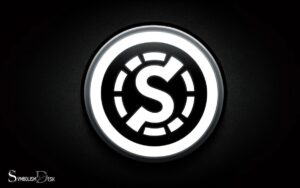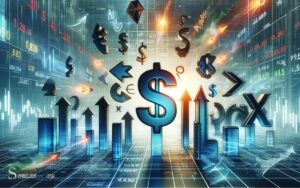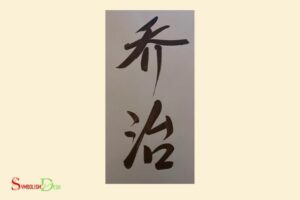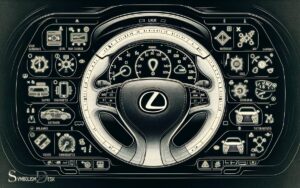What Do Reiki Symbols Mean? Energetic System!
Reiki symbols are spiritual icons that are used to channel energy for physical and emotional healing.
These symbols represent elements of the energetic system and are used to amplify the healing process by focusing on different areas of the patient’s body or life.
Reiki is a form of alternative therapy that originated from Japan. It employs the use of unique symbols that are believed to help channel energy from the practitioner to the recipient.
Each symbol has its own specific meaning and is designed to address a different aspect of healing.
The four main Reiki symbols are Cho Ku Rei (the power symbol), Sei He Ki (the emotional and mental healing symbol), Hon Sha Ze Sho Nen (the distance symbol) and Dai Ko Myo (the master symbol).
In Reiki practice, these symbols are not just images but are sacred tools used to connect with the universal life force.
By memorizing the symbols and their meanings, Reiki practitioners can direct the energy to specific areas of the body or aspects of life that need healing, making their practice more effective and potent.
4 Meaning of Reiki Symbols
| Symbol Name | Description | Meaning |
|---|---|---|
| Cho Ku Rei | The Power Symbol | This symbol can be used to increase or decrease power (depending on the direction in which it is drawn). Its purpose is to bring the source of universal energy into the physical realm. |
| Sei He Ki | The Mental/Emotional Symbol | This symbol represents balance. It can be used for protection and cleansing, making it ideal for dealing with issues of the mind and emotional baggage. |
| Hon Sha Ze Sho Nen | The Distance Symbol | This symbol signifies transcendence of time and space, allowing the practitioner to perform distance healing. It connects the practitioner to the universal life force and to the higher self of the person to be healed. |
| Dai Ko Myo | The Master Symbol | This symbol represents enlightenment and the divine. It’s often associated with the power to heal the soul because it deals with the patient’s spiritual self. |
Key Takeaway
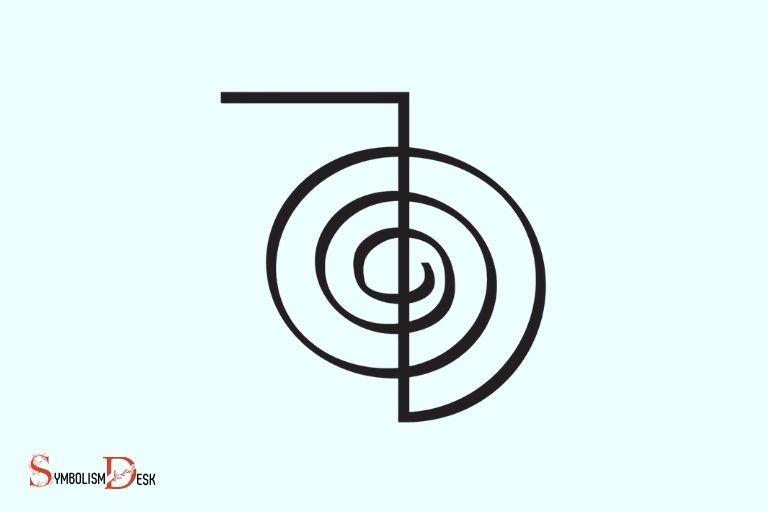
Five Facts About: Reiki Symbols Mean
What Do Reiki Symbols Mean? A Comprehensive Guide
Definition Of Reiki Symbols
Reiki symbols are japanese characters used in the practice of reiki to focus and direct healing energy. They are a means to channel energy and to support the healing process.
Some of the most commonly used symbols in reiki are cho ku rei, sei he ki, hon sha ze sho nen, and dai ko myo.
- Cho ku rei is a symbol used to increase the power of healing energy.
- Sei he ki is a symbol used to help clear emotional and mental blockages.
- Hon sha ze sho nen is a symbol used to help heal past events and traumas.
- Dai ko myo is a symbol used for spiritual alignment and enlightenment.
Importance Of Understanding Reiki Symbols
Understanding reiki symbols is crucial to effectively practice reiki. The symbols are powerful tools that help in developing intuition, focus, and intention in the process of energy healing.
The ability to understand the meanings and functions of the symbols enhances a reiki practitioner’s healing abilities.
- Understanding reiki symbols helps in channelling energy more effectively.
- It also helps in amplifying the flow of healing energy.
- Knowledge of reiki symbols helps practitioners to treat specific conditions and areas of the body.
How Reiki Symbols Differ From Regular Symbols
Reiki symbols differ from regular symbols in the way they are used and their intention. The symbols used in reiki are not just ordinary characters; they are sacred tools that invoke spiritual energies for healing purposes.
- Traditional symbols are associated with language and communication, while reiki symbols involve metaphysical energy transmission.
- Reiki symbols are also unique in that they cannot be translated into other languages.
- Reiki symbols can be activated through visualization or drawing, while regular symbols do not require activation.
Reiki symbols are powerful tools that help in focusing and directing healing energy. Understanding their meanings and functions is essential for reiki practitioners to effectively channel healing energy.
While they share similarities with regular symbols, reiki symbols are unique in their intention and usage.
The Origins Of Reiki Symbols
Reiki, a japanese healing technique, has gained increasing popularity worldwide in recent years, with more people seeking alternative treatments for health and wellbeing.
Reiki relies on the channeling of universal energy to promote harmony and balance within the body, mind, and spirit.
One of the most distinctive aspects of reiki is the presence of symbols, which are integral to its practice.
History Of Reiki Symbols
Reiki symbols have been around since the early 20th century when mikao usui, the founder of reiki, introduced them to the system.
Usui had studied various disciplines, including chinese taoism, shintoism, and buddhism, before developing reiki. He believed that symbols were a powerful manifestation of intention and could be used to focus energy.
Usui passed on his knowledge of reiki to others, who further developed the symbols and incorporated them into the practice.
Reiki Symbols In Traditional Medicine
In traditional japanese medicine, practitioners use various symbols and hand positions to direct energy flow in the body. The reiki symbols have similarities to some of these symbols but are unique to the reiki practice.
Reiki symbols are often used in conjunction with hand positions to guide the flow of energy to specific areas of the body or to promote healing of certain conditions.
Role Of Reiki Symbols In Modern Times
In modern times, the use of reiki symbols has become widely accepted, and they play an essential role in reiki healing sessions.
The symbols are used to connect with the universal energy and facilitate the healing process. There are several reiki symbols, each with its unique meanings and applications.
They serve as a visual representation of the intention of the reiki practitioner and can help the recipient to focus their own energy.
Some of the common reiki symbols include:
- Cho ku rei symbolizes power and protection and is often used at the beginning of a healing session to activate the energy.
- Sei hei ki symbolizes emotional healing and purification and is often used to address emotional issues.
- Hon sha ze sho nen symbolizes connection and distance healing and is often used to send healing to someone who is not present physically.
Reiki symbols are an integral part of the practice of reiki and have a deep history rooted in japanese healing traditions.
They have a profound impact on channeling energy and promoting healing and wellbeing in the modern world.
The Different Types Of Reiki Symbols
Reiki is a spiritual healing practice focused on balancing and harmonizing the energy within the body. It uses different symbols to channel the energy to the recipient and amplify its effects.
These symbols serve as a bridge between the practitioner and the client, enhancing the flow of energy and opening up the chakras.
Here are the four main types of reiki symbols:
Focus Symbols
These symbols are primarily used to aid focus and to sharpen the practitioner’s concentration. They help bring clarity and direction to the practice.
Some of the commonly used focus symbols are:
- Cho ku rei: Often called the “power symbol,” it is used to increase the energy flow in the body.
- Dai ko myo: The “master symbol,” it is used to connect with the higher self and to promote healing on the spiritual level.
Connection Symbols
The connection symbols are used to establish a connection between the practitioner and the client and to create an energy pathway. These symbols are used to increase the frequency and strength of the energy exchange.
Some of the commonly used connection symbols are:
- Sei he ki: This symbol is used for mental and emotional healing and to balance the conscious and unconscious minds.
- Hon sha ze sho nen: The “distance healing symbol,” it is used for healing the past, present, and future.
Empowerment Symbols
The empowerment symbols are used to purify, elevate and activate the energy within the body. These symbols are used to increase the overall energy levels and aid in the healing process. The empowerment symbols work by aligning the body’s energy centers and promoting a harmonious flow of vitality. Just as symbols can influence the body’s internal energy, understanding the ‘12v symbol meaning in electronics‘ can provide clarity in the realm of circuits and power systems, symbolizing a standardized voltage level. Both in spiritual practices and technical fields, symbols play a crucial role in conveying deeper meanings and guiding purposeful actions.
Some commonly used empowerment symbols are:
- Cho ku rei: As mentioned before, this symbol can be used both as a focus and empowerment symbol. It is used to boost the energy flow in the body.
- Dai ko myo: This symbol can also be used as an empowerment symbol by the practitioners. It is believed to be a powerful symbol that helps in the spiritual awakening of the person.
Mental/Emotional Symbols
The mental/emotional symbols are used to address the emotional and mental state of the client. These symbols are helpful in clearing emotional and mental blocks and promoting relaxation.
Some of the commonly used mental/emotional symbols are:
- Sei he ki: As mentioned before, this symbol is primarily used for mental and emotional healing and to balance the conscious and unconscious minds.
- Hon sha ze sho nen: This symbol can also be used for mental and emotional healing by promoting relaxation and reducing stress levels.
Reiki symbols are a powerful tool that aid in the spiritual healing process.
They are used to enhance the energy flow between the practitioner and the client and to promote well-being on all levels – physical, emotional, and spiritual.
The Significance Of Each Reiki Symbol
Reiki is a japanese holistic healing technique that uses energy to balance the mind, body, and spirit.
The teachings of reiki involve the use of symbols that practitioners use to channel energy and promote healing. Each symbol has a specific meaning and significance.
Cho Ku Rei (The Power Symbol)
Cho ku rei is the first reiki symbol that practitioners learn. It is also known as the power symbol as it helps to magnify and intensify the energy that practitioners channel.
Some key points about this symbol are:
- The symbol resembles a coil and represents the flow of energy.
- It can be used to enhance the power of healing and protection.
- Cho ku rei can be used to focus energy to a specific body part or chakra.
Sei He Ki (The Mental/Emotional Symbol)
Sei he ki is the symbol used for balancing the emotions and mental states. It is also known as the harmony symbol.
Here are a few key points about this symbol:
- The symbol resembles a human being and represents the balance between the left and right hemispheres of the brain.
- Sei he ki can be used to balance the emotional and mental state of the person receiving reiki.
- It can be used to heal emotional trauma and promote mental clarity.
Hon Sha Ze Sho Nen (The Distance Symbol)
Hon sha ze sho nen is the symbol used for distant healing. It is also known as the connection symbol.
Here are a few key points about this symbol:
- The symbol resembles the shape of the universe and represents the connection between all things.
- Hon sha ze sho nen can be used to send reiki energy to someone who is not physically present.
- It can be used to heal hurtful memories, past lives, and traumas.
Dai Ko Myo (The Master Symbol)
Dai ko myo is the symbol used for spiritual and intuitive healing. It is also known as the master symbol.
Here are a few key points about this symbol:
- The symbol resembles a burst of light and represents enlightenment.
- Dai ko myo can be used to raise the vibration of the recipient’s energy.
- It is used to promote healing on all levels: Physical, emotional, mental, and spiritual.
Each reiki symbol has a unique meaning and significance.
Cho ku rei strengthens the power of healing, sei he ki balances emotions and mental states, hon sha ze sho nen connects all things and promotes distant healing, and dai ko myo promotes spiritual and intuitive healing.
These symbols are powerful tools that practitioners can use to channel energy and promote balance and healing in the mind, body, and spirit.
Preparation For Using Reiki Symbols
Reiki symbols are ancient and powerful, and they help a practitioner focus their energy when performing a reiki healing session.
Knowing the meaning of each symbol is essential, but before using them, a practitioner must prepare themselves mentally and physically so that they can channel the symbols’ energy adequately.
Here are some key steps to take before using reiki symbols:
Grounding Techniques
Grounding techniques help a practitioner to connect with the earth’s energy, centering and stabilizing them before beginning a session.
The following techniques are helpful:
- Stand barefoot on the grass and imagine roots growing from the soles of your feet, deep into the earth.
- Hold a crystal, such as black tourmaline, hematite, or smoky quartz, in your left hand and take deep breaths while visualizing the grounding energy flowing through your feet.
- Visualize a shield of white light surrounding you, protecting you from negative energy and grounding you to the earth.
Setting Up Your Space
Before using reiki symbols, it’s necessary to set up an appropriate space that is conducive to a healing session.
The following tips may be helpful:
- Cleanse the space with sage or palo santo to remove negative energy.
- Place a natural crystal (such as amethyst, rose quartz, or clear quartz) in the center of the space and light candles or incense to create a calm ambiance.
- Play soft music (such as meditation or spa music) to enhance relaxation and quiet the mind.
Choosing The Right Reiki Symbol For Your Intention
Using a specific reiki symbol can help to focus energy and enhance the healing process.
Here are some examples of reiki symbols and their intended purposes:
- Cho ku rei: This symbol is used to increase power and provide protection.
- Sei he ki: This symbol is used to heal emotional and mental issues.
- Hon sha ze sho nen: This symbol is used for distant healing, connecting the practitioner to the person or situation being healed.
- Dai ko myo: This symbol represents enlightenment and is used to promote spiritual growth.
Selecting the appropriate symbol for your intention is crucial as it will help you channel the energy in a meaningful and effective way.
By following these steps, you will ensure that you are adequately prepared to use reiki symbols and enhance the effectiveness of your healing sessions.
Step-By-Step Guide To Using Reiki Symbols
Reiki symbols are a vital part of reiki, a popular japanese meditation technique that promotes healing, stress relief and physical wellness.
The reiki symbols are said to activate the energy flow within our physical and emotional bodies, enabling the practitioner to channel the healing energy from the universe.
If you are interested in learning how to use these symbols for your personal growth and healing, read on for a step-by-step guide to using reiki symbols
Including how to connect to your inner self, draw the reiki symbol, and recite the reiki symbol’s name/thought.
Connect To Your Inner Self
Before you begin using the reiki symbols, it is essential to connect with your inner self.
This helps you to tap into your energy and the energy of the universe, which will allow you to use the reiki symbols more effectively.
The following are a few steps to connect to your inner self:
- Take a few deep breaths.
- Close your eyes and relax.
- Focus on yourself and your breath.
- Set an intention for your practice.
Draw The Reiki Symbol
Drawing the reiki symbol is the second step to using reiki symbols. Each symbol has a unique form and meaning.
To draw the reiki symbol:
- Visualize the symbol in your mind.
- Draw the symbol slowly and carefully, using your index and middle fingers of your dominant hand.
- Draw the symbol large enough to see it clearly.
Recite The Reiki Symbol’S Name/Thought
Reciting the reiki symbol’s name/thought is the final step to using reiki symbols. Each symbol has a specific intention or message.
Reciting the reiki symbol’s name/thought is essential to activate its energy:
- Focus your mind on the symbol.
- Gently recite the name/thought of the symbol 3 times.
- Feel the energy of the symbol within your body.
Using reiki symbols is a powerful way to connect with your inner self and the universe, allowing you to promote healing and well-being.
Remember to connect to your inner self, draw the symbol, and recite the symbol’s name/thought to harness the energy of the reiki symbols effectively.
Combining Reiki Symbols
Reiki is a japanese healing technique that aims to balance the body’s energy and promote physical and spiritual well-being.
Reiki practitioners use symbols to help them connect with the energy field and channel healing energy for the recipient.
Understanding the meaning of reiki symbols and how they can be combined is crucial for any reiki practitioner.
Choosing The Right Combination
Not all reiki symbols are meant to be used together. In fact, some symbols can have conflicting meanings, making it important to choose carefully when combining them.
Here are some things to consider when choosing the right combination:
- Understand each symbol’s meaning: It’s important to understand the meaning and significance of each symbol before combining them. This will help you determine which symbols work well together and which ones should be used separately.
- Be mindful of the recipient’s needs: Before combining symbols, consider the recipient’s needs and the purpose of the reiki session. Some symbols may be more effective than others depending on the recipient’s condition.
- Avoid overcomplicating the session: Combining too many symbols can lead to confusion and weaken the overall effectiveness of the reiki session. Keep things simple and focus on a few effective combinations.
Benefits Of Combining Reiki Symbols
Combining reiki symbols can have many benefits for the practitioner and the recipient.
Here are some of the benefits:
- Greater focus and intention: Combining symbols can help you focus your intention and channel your energy more effectively.
- Amplified energy: Using more than one symbol can amplify the energy flow and provide a more powerful healing experience for the recipient.
- Customization: Combining symbols allows practitioners to create customized healing experiences for their clients.
- Improved healing: Using the right combination of symbols can lead to a more effective and targeted healing session.
Remember, combining reiki symbols requires practice and experience. As a reiki practitioner, you need to develop expertise in choosing the right combination for each specific situation.
By doing so, you can create a powerful and effective reiki session that will promote physical, emotional, and spiritual healing for your clients.
Innovations In Reiki Symbol Practice
The world of reiki constantly evolves, finding new ways to help people connect with their energy and heal.
One of the areas where reiki has seen significant innovation is in the use of symbols. In this section, we’ll explore new reiki symbols, the power of personalizing reiki symbols, and the process of creating your own reiki symbols.
New Reiki Symbols
Reiki symbols have been used for decades to help practitioners tap into specific aspects of energy to provide healing benefits.
Recently, new reiki symbols have emerged to complement the traditional ones and offer new ways of connecting with energy.
Here are a few examples:
- The flower of life: Symbolizes the interconnected nature of all things.
- The antahkarana: Facilitates deeper meditation and connection with self.
- The karuna reiki® symbols: Provides healing for deeper wounds and fosters compassion.
The Power Of Personalizing Reiki Symbols
Reiki symbols can be personalized to suit an individual’s unique needs and experiences. Personalizing symbols can help practitioners connect with their own energy in a more profound way.
Consider the following tips to personalize your reiki symbols:
- Choose symbols that resonate with your own experiences and understanding of energy.
- Meditate on the symbol to connect with its energy and imbue it with your own intentions.
- Use the symbols regularly in your practice to deepen your connection and understanding of them.
Creating Your Own Reiki Symbols
Creating your own reiki symbols can be a powerful way to connect with your energy and intentions.
Here are some tips to guide you in creating your own personal reiki symbols:
- Determine your intention behind the symbol and build the design around it.
- Choose colors that symbolize the intention behind the symbol.
- Meditate on your symbol to connect with its energy and imbue it with your own intentions.
Innovations in reiki symbol practice offer practitioners new pathways to connect with energy and healing.
With new reiki symbols emerging and the ability to personalize and create your own symbols, the possibilities for connecting with energy are endless.
Common Misconceptions About Reiki Symbols
Reiki symbols are visual representations that are used in reiki healing. These symbols are believed to possess sacred and powerful energy that can enhance the healing process.
However, there are some common misconceptions about the use of reiki symbols that are briefly explained below.
The Need For A Reiki Master To Use Symbols
- Reiki symbols are not required to perform reiki healing.
- However, reiki symbols can help reiki masters to focus their intention and connect with the universal energy.
- It is important to note that reiki symbols are not the source of the energy, but rather a tool to help reiki masters tap into the energy.
Reiki Symbols And Religious Beliefs
- Some people believe that reiki symbols are associated with certain religious practices or beliefs.
- However, reiki symbols are not affiliated with any religion or belief system.
- Reiki is a holistic healing practice that can be used by anyone regardless of their religious or spiritual beliefs.
Negative Effects Of Reiki Symbols
- Some people believe that reiki symbols can have negative effects on individuals who are not trained to use them.
- However, reiki symbols are completely safe and do not have any negative effects.
- Reiki is a gentle and non-invasive healing practice that can be used by anyone, regardless of their age or medical condition.
Reiki symbols are powerful tools that can help reiki masters to enhance their practice, but they are not necessary for the healing process.
Additionally, reiki symbols are not affiliated with any religious or spiritual belief system and do not have any negative effects on individuals who are not trained to use them.
FAQ About What Do Reiki Symbols Mean
What Do Reiki Symbols Represent?
Reiki symbols are representations of energy that connect with the universe.
How Do Reiki Symbols Work?
Reiki symbols work to harness and amplify the power of reiki energy for healing.
What Are The Major Reiki Symbols?
The major reiki symbols are cho ku rei, sei hei ki, and hon sha ze sho nen.
How Do You Activate Reiki Symbols?
To activate reiki symbols, draw or visualize them while focusing on the intended purpose.
Can Anyone Use Reiki Symbols?
Anyone who is attuned to reiki can use reiki symbols for healing and spiritual growth.
Conclusion
To sum it up, reiki symbols are the manifestation of universal energy and are imbued with esoteric meanings that enhance the flow of positive energy in healing.
Each symbol represents a specific aspect of life and can help to promote physical, mental, emotional, and spiritual balance.
Whether you are a certified reiki practitioner or simply interested in learning more about the symbols, understanding the meaning behind them can deepen your connection with the ancient healing practice.
Through the use of reiki symbols, practitioners can access the healing energy of the universe and direct it towards the areas of the body that need it the most.
So next time you receive a reiki treatment, take a moment to appreciate the profound significance of the symbols used and the powerful impact they can have on your overall well-being.


